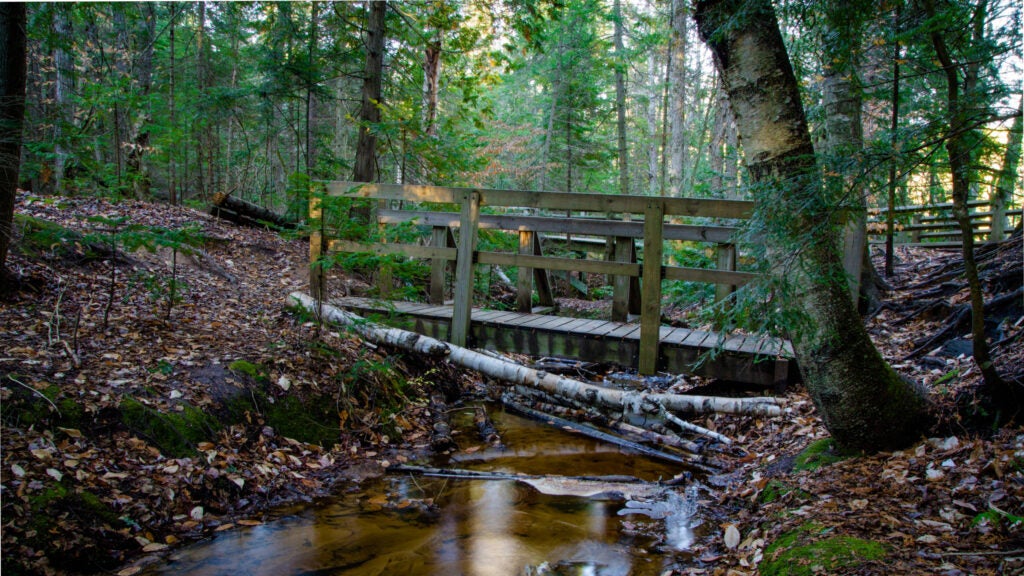



The Ice Age Trail (IAT), North Country Trail (NCT), and New England Trail (NET) will become the newest units of the United States’ national park system, opening up new possibilities for funding and potentially speeding up progress on the still-under-development paths, federal officials said today.
In a press release, National Park Service Director Chuck Sams said that he hoped the new designations would “increase public awareness and use of these amazing pathways.”
“Their combined 5,500-plus miles travel through parts of 10 states and hundreds of communities, from large cities to rural towns, providing countless close-to-home opportunities for people to easily access green space and enjoy the benefits of outdoor recreation,” Sams said.
The paths will join three other national scenic trails—the Appalachian Trail, Natchez Trace Parkway, and Potomac Heritage Trail—under NPS management as the 426th, 427th, and 428th national parks, the agency wrote, noting that it was including NPS-managed units with other names like “national seashore” and “national monument” in that count.
The NCT is the longest national scenic trail in the United States; at roughly 4,800 miles, it’s nearly twice as long as the Pacific Crest Trail, stretching from Middlebury, Vermont to central North Dakota and passing through plains, the hills of the Upper Midwest, and across the Straits of Mackinac along the way. The IAT traverses 1,200 miles across the glacier-scoured moraines, mountains, and lakeshores of Wisconsin, drawing a loose S on its way from Door County down to the Illinois border and back up to the Minnesota state line on the St. Croix River. Both trails still have gaps: Thru-hikers on the NCT hike for more than 1,600 miles on roads and other connecting routes, and IAT hikers spend about half their time on country roads. The NET is the shortest of the three at just 235 miles across Connecticut and Massachusetts, and still largely lacks the on-trail camping for a traditional thru-hike.
Sen. Tammy Baldwin (D-WI) was driving across Wisconsin when she heard news of the redesignation. On a group video call, she said she pulled out her phone, found the nearest trailhead for the IAT, and—over the objections of her staff—drove there to take a picture in celebration.
“Running through the Great North Woods, over rolling hills and prairies, past inland lakes and waters and finally winding up along Lake Michigan, this trail showcases some of the best that our state has to offer,” Baldwin said. “And along those hundreds of miles, local businesses, and outdoor enthusiasts reap the benefits of having this great jewel in their backyard.”
While the redesignation won’t immediately result in changes on the ground, trail organizations and their supporters are hoping that it will open up additional funding opportunities, bring in volunteers, and speed up the process of building new treadpath. Certain sources of money for trail work like the NPS’s Connect Trails to Parks program are only available to national scenic trails administered by the agency or linked to areas it manages.
Luke Kloberdanz, the executive director of the Ice Age Trail Alliance, said that while granting NPS status to the trail was a small step for the park service, it was “momentous” for the IAT and NCT.
“I happen to be calling in from a title company where we are closing on a property that we just purchased for the [IAT],” said Kloberdanz, speaking on the video call. “So I think having the cachet that comes with being a national park unit, the resources that become available help us close these gaps and meet our mission each day.”
From 2023

